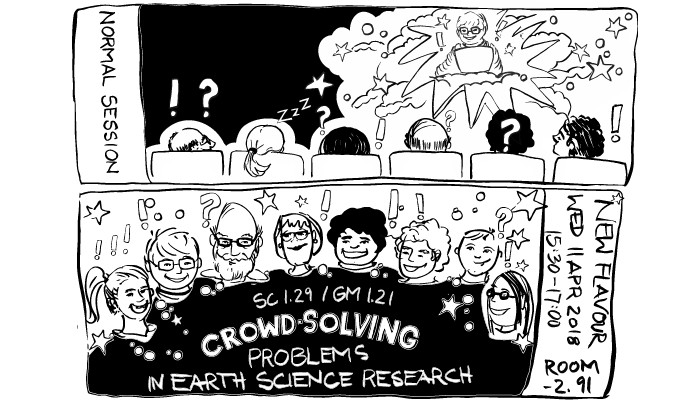
written by: Anne Voigtländer, Anna Schoch, Elisa Giaccone, Harry Sanders, Richard Mason, Johannes Buckel
At the EGU General Assembly international researchers from all earth science communities gather and share their most recent endeavors. This year, we, a group of European young geomorphologists, tried a new session format to address challenges we all face in our research, ranging from inaccessible data and methods, unknown initial conditions, up and down scaling in space and time, to unknown processes and land forms. In discussions of conference talks, only the tip of the iceberg of Earth science research can be exploited. The rest of the iceberg, resembling all challenges, ideas and minds (of the audience) usually remains in the shaded, unspoken depth. We explicitly wanted to cater these challenges or ideas and use the crowd of participants to approach or solve them. In the short course SC1.29/GM12.1 “Crowd-solving problems in earth science research”, we wanted to use the synergetic effect of the diverse conference audience as a resource. Our main methodology to access these resources was old-fashioned discussion. We flipped the tables and had problem stating talks for 2 minutes, which is the usual discussion time. Five Early Career Scientists came forward with their challenges and ideas they face in their research and asked the audience for solutions in 40-minute discussion rounds:
How to secure funding for basic, non-societal research?
(Vittoria Vandelli, Università di Modena e Reggio Emilia, Italy)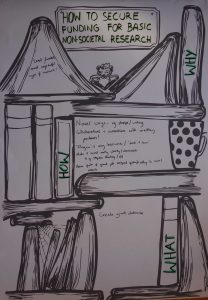
Perhaps one of the least funded, but historically most productive research areas is basic research, which at the time may appear to have little or no public impact, but often results in ideas and inventions that change history. In a world of ever reducing science budgets, securing funding and finding novel methods of funding research outside of grants, becomes the holy grail. You can write about your work for magazines who in turn cover your travel expenses, sell local stamps to collectors and even involve the curious public for non-mainstream projects. However, in reality, the majority of our basic research relies on grant success, and so the ability to write a strong application (hitting on popular paradigms like ‘climate change’). In that case the challenge is to find and access grants. So why not create an open access database for ECS, to both contribute and utilize for securing grant funding? However, if you have tried and not found success with grants, hobby writing isn’t for you, and the idea of involving the public isn’t feasible, there’s nothing wrong with teaming up and collaborating with an already wealthier researcher!
How to make measurement techniques affordable?
(Anette Eltner, Technische Universität Dresden, Germany)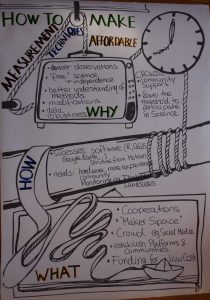
There are many good reasons to make measurement techniques affordable, such as fostering independent research, having low barrier easy access (financially, politically), increasing the quantity and density of data and thus robustness, greateningr knowledge of and possibilities to improve measurement techniques, and becoming more resilient if devices get swept away in monitoring hazardous processes… However, data quality and reliability need careful consideration, and data processing and analysis need automation to handle increasing data amount. Several examples associated with low cost solutions are already applied in earth science research; foremost are software solutions (e.g. R, QGIS). What we need for the hardware measuring devices is cooperative development of more low cost methods, big data handling and quality assessments. This could be realized in a “maker space” at universities, where scientist from different disciplines can gather to find joint solutions, or platforms and communities, such as GitHub for software. Therefore, the “crowd” and communication in this crowd could be a solution. In an ideal case, low cost methods were associated with a “crowd” supporting the application and development. Additional funding to promote in particular low cost methods should be provided.
Numerical modelling at the edge: why accuracy matters?
(Benjamin Campforts, KU Leuven, Belgium)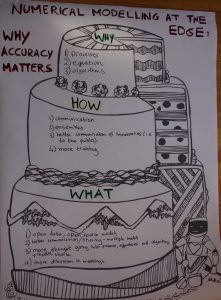
Numerical models are transforming our understanding of the world around us, allowing simulations of processes at scales impossible to investigate by any other means. Numerical models are simplifications or idealisations of ‘real’ environments and the accuracy of the model outputs is reliant on how well models represent this reality. Thus, while the possible complexity of numerical models makes them essential and ground-breaking tools for earth science research, they also cause some problems. First of all, how well do we understand these natural processes and how are they incorporated in the model design? And then, which equations and algorithms should we choose, ideally based on in-depth knowledge of natural processes? In this respect, interdisciplinary communication and exchange is required between modelers and field-based scientists in order to parametrize and grasp the physics of the natural processes. Practically we need greater sharing of ideas, open source models and data, to improve accuracy and help to understand errors surrounding model predictions.
How to secure data accessibility as a young researcher?
(Moctar Dembélé, Université de Lausanne, Switzerland)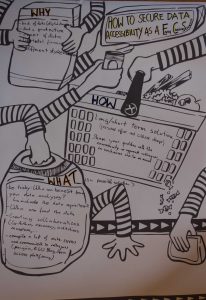
Depending on where we live, or the topics we work on, data (i.e climatic, atmospheric, hydrological, topographic…) is not available. And when it is available, sometimes it is a challenge to get access to it. To call this challenge might actually be the starting point to overcoming it and allowing ECS to contribute substantially to science. Both, the producers (governmental or private agencies) and potential users (scientists) of the data can help with data access, without personal, national or financial biases. In order to make this happen, we need to clarify why data sharing and accessing is beneficial to both parties. Produced and published (meta)data (where data acquisition is described in a reproducible way) wants more fame, collaboration and citation. Governmental and private data producers could use the same, already existing platforms, scientific peers use to share and access their data. Users, especially ECS, would love to have common platforms to share and access data that could be used to reinterpret and expand data and to identify data gaps
How to overcome the subjective nature of interpreting fluvial archives?
(Wolfgang Schwanghart, Universität Potsdam, Germany)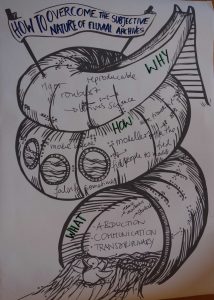
Interpretations of archives and subsequent parametrizations for (numerical) models rely on subjects as well as the very individual and special outcrop site. A first step could be to have the experience based tacit knowledge of a subject be translated into explicit knowledge, in order to make it accessible and comparable for other subjects (deduction). Combining the interpretations of several (interdisciplinary) subjects might provide a more objective, rigor and robust perspective. If enough parameters and proxies exist, we could also turn to statistics (induction). And if that is no option, we might try abduction, like Sherlock Holmes, where iterations of field/archive and model/statistics can, at least subjectively, make data collection more transparent, sharpen the interpretation and define further research questions.
We need to talk!
A synthesis solution to the question and the above stated challenges is: Communication. Obviously you can’t solve the challenges in 40 minutes, but the concept to spend more time for discussions on a conference to tackle the problems every scientists faces in this way or another worked. All five groups with roughly ten participants. Each came into conversation, exchanged experiences, analysed new aspects and developed ideas. We received very positive feedback from all participants and were encouraged to organize a similar event again – so maybe next year we can crowed-solve what the submerged part of an iceberg is called, anyway?
The organization of this session was financially supported by the British Society for Geomorphologie and the Arbeitskreis für Geomorphologie.
written by: Anne Voigtländer, Anna Schoch, Elisa Giaccone, Harry Sanders, Richard Mason, Johannes Buckel
Contact: geomorph-problems@geographie.uni-bonn.de

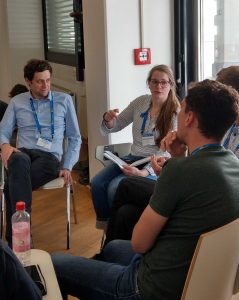
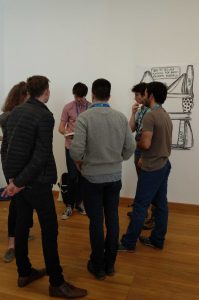
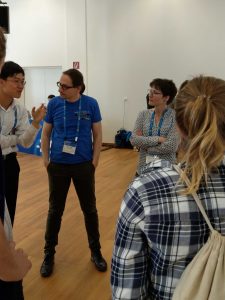
Gabriele
I think that it is an important thing that this meeting was organized by representatives of groups of young geomorphologists from different countries. I wish that this kind of initiatives will became more frequent in the future and that the European Young Geomorphologists will became a solid group!